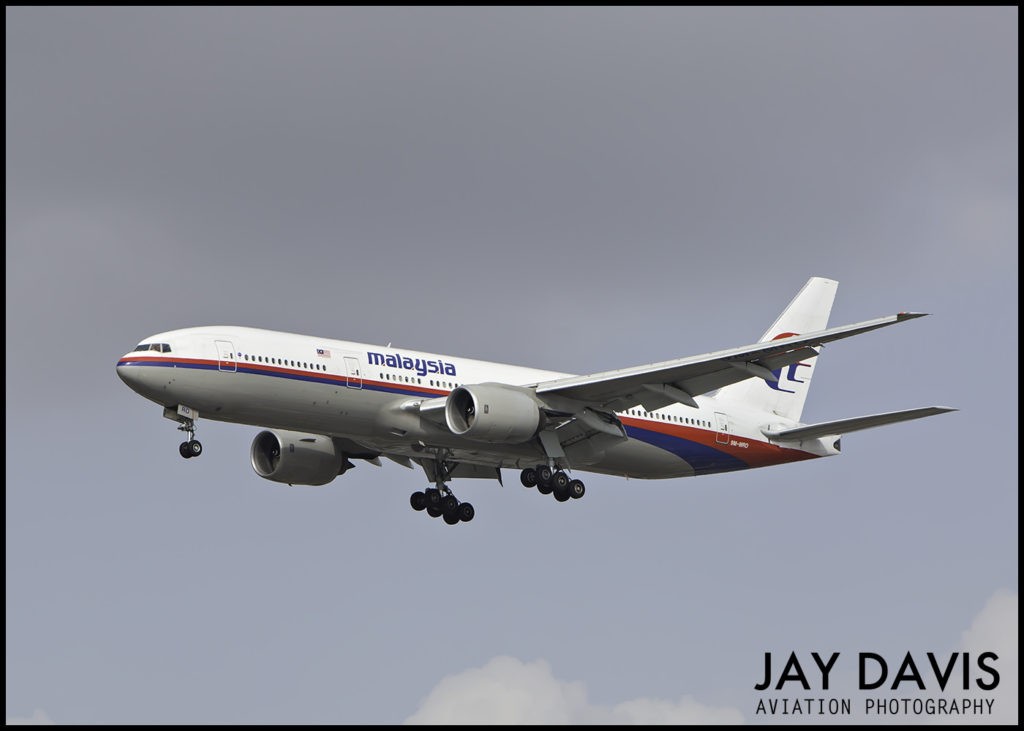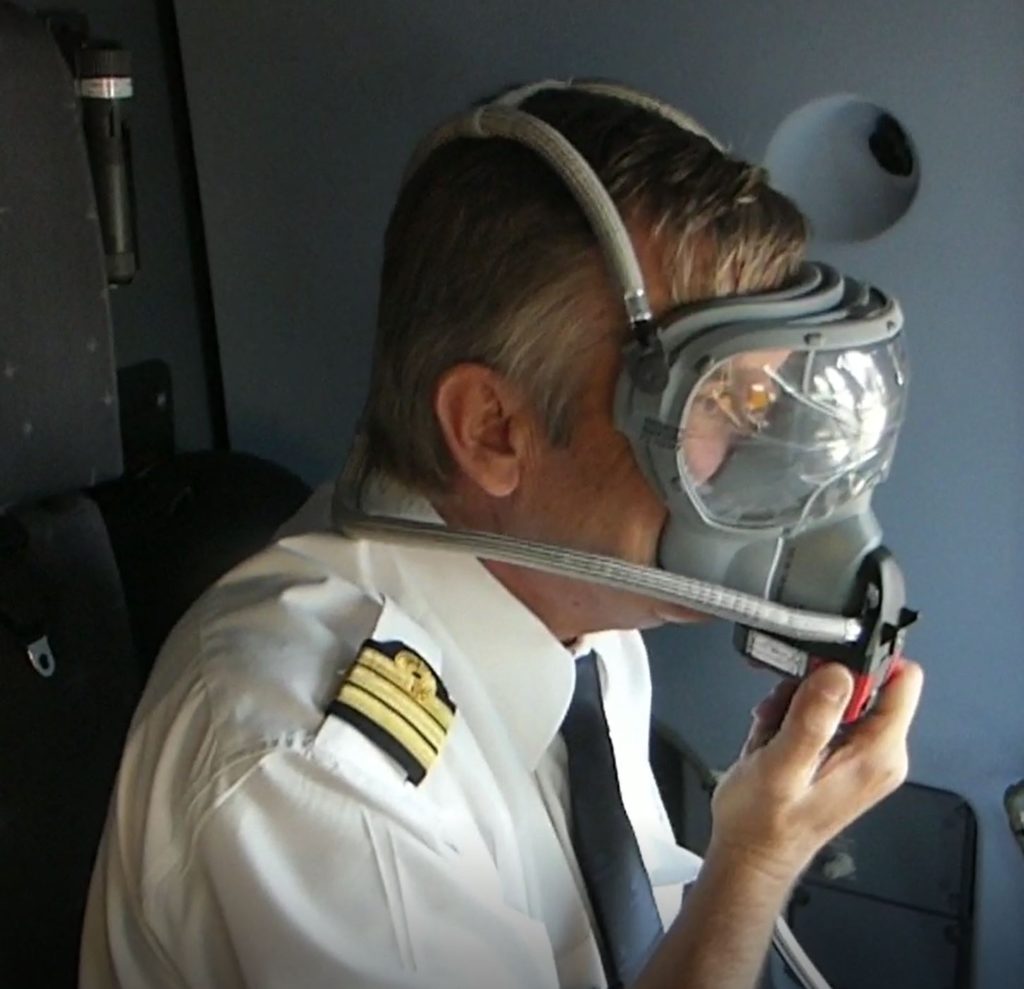
Having nothing new to say is usually the fastest way to obscurity. That is not the case with the release Monday of the final report into Malaysia Flight 370, the Boeing 777 that disappeared along with 239 people on a flight to Beijing four and a half years ago.
It took the Malaysian air accident investigators 400 plus pages to conclude it is “unable to determine the real cause” of the accident. There are however, shards of new information in the report. These buttress the theory that the loss of this airplane was due to the not-unprecedented problem of pilot incapacitation due to oxygen starvation.
First is the not-so-shocking revelation that someone “manipulated” the controls of the plane when it turned off course from its destination to China and headed back to towards Malaysia, making one turn after another and at angles of bank outside what the auto pilot would allow. And while this can’t be too surprising to anyone giving it more than a second’s thought, the unexamined question is “why”. Why would the person in the cockpit fly in those directions and in that manner?

To me, that insensible action is a bright and shining clue that the pilots’ actions were illogical because they were incapable of logical thought. My scenario is that the plane depressurized at 35 thousand feet. The first officer, alone in the cockpit, put on his emergency oxygen mask but failed to get 100 percent oxygen under pressure which would be required to restore his intellectual acuity.
Instead, with the insidious feeling of well-being that characterizes hypoxia – or oxygen starvation – the pilot turned the plane back toward Kuala Lumpur. He knew there was a problem but didn’t have the brain processing power to act appropriately. This explains why he turned in one direction then another before passing out as the plane headed into the world’s most remote sea.
In its report, the Malaysian team throws even more weight on that possibility by confirming that the crew emergency oxygen bottles were serviced immediately prior to the flight. And three months before that, the hoses to the oxygen system had been replaced following a Boeing Service Bulletin.
While acknowledging this maintenance work on what should be a system of extreme interest, the investigators go no farther. No details of how maintenance workers were trained to do this work is provided. No background review of the airline’s history of issues with oxygen systems on other airplanes in the fleet is provided. The investigators are content concluding that since the airplane hadn’t a problem in the past, it didn’t have one on March 8, 2014.
“There was no Mandatory Occurrence report raised for this aircraft on pressurisation issues. A review of the Technical Log entries since the last D check in June 2010 did not reveal any defect trends in the air conditioning or the pressurisation systems,” the report states.
Interestingly, in 2014, while doing its own research into where the missing airplane might be found, the Australian Transportation Safety Bureau suggested the illogical flight path gave them reason to believe that MH370 might be yet another case of pilots mishandling a loss of cabin pressure at altitude. That this should be front-of-mind for the Australians isn’t a surprise.
 In 2006, the ATSB was eager to get a handle on how frequently depressurizations occurred. It went back 30 years counting 500 loss of cabin pressure events worldwide. That’s roughly 16 a year. The majority of these occurred on “large passenger-carrying commercial transport aircraft,” and more than a few involved some kind of incapacitation of the crew. The Australians also discovered that these events are becoming more frequent.
In 2006, the ATSB was eager to get a handle on how frequently depressurizations occurred. It went back 30 years counting 500 loss of cabin pressure events worldwide. That’s roughly 16 a year. The majority of these occurred on “large passenger-carrying commercial transport aircraft,” and more than a few involved some kind of incapacitation of the crew. The Australians also discovered that these events are becoming more frequent.

Whether this happened on MH370, I can’t say. What I do know is that after four years, the Malaysians should have done more digging than what is represented by the dozen paragraphs addressing this particular possibility. Because that’s what’s required to live up to the lofty goals of accident investigations which is to identify errors and fix them to prevent similar accidents.
For professional investigators, nothing will replace the “ah-ha” moment, the clarity of certainty that one has discovered what happened. At the same time, it is also their role to act on the what-could-have beens. On that score, the MH370 final report fails far short of the mark.

Author of The New York Times bestseller, The Crash Detectives, I am also a journalist, public speaker and broadcaster specializing in aviation and travel.









Well done
I tend to agree with your oxygen starvation theory, however, why was the transponder turned off, and until more evidence is found, can a criminal act, hijacking, be completely ruled out? I think not.
Interesting possibility for sure Christine and you may indeed be right. Your analysis certainly makes we want to read the report.
It is a shame that in the end we’ll never be able to pin down the cause for sure. Bet you’re pretty close though if the investigation ignored much of this.
But how many times have you watched a TV interviewer let someone off the hook by never asking what would seem to be the next logical question?
According to your book aircrash investigators, regarding MH370 Why and how you possibly came to the conclusion that the captain went to the bathroom as you have written and lost coscience in the galley leaving the less experience first officer alone in the flight deck. As you probably know only explosive decompression give few second to react at cruising altitude. Fog in the cabin is the first indication. Do the captain fail to recognize this event and fail to grab the portable oxigen bottle in the galley too? Not the plane nor the Flight recorders have been founded.
How can you talk about it ?
No way it happened like that. Transponder turned off, pilot flew different courses, and NO MAYDAY radio call. Pilots are trained to respond to rapid decompression scenarios, and although this pilot was new in the aircraft, he obviously was not new to flying and had the required training in the 777 to become co-pilot.